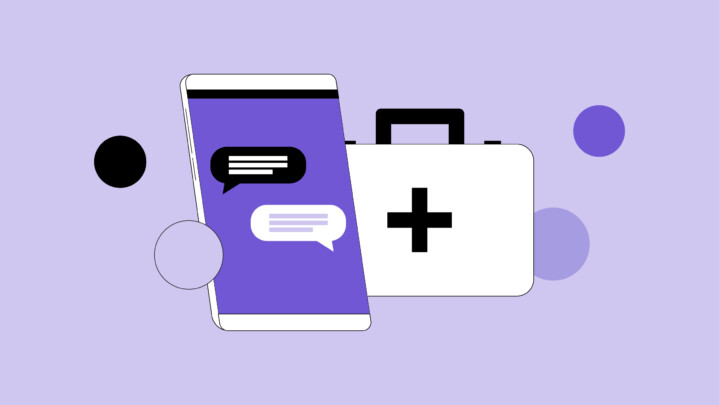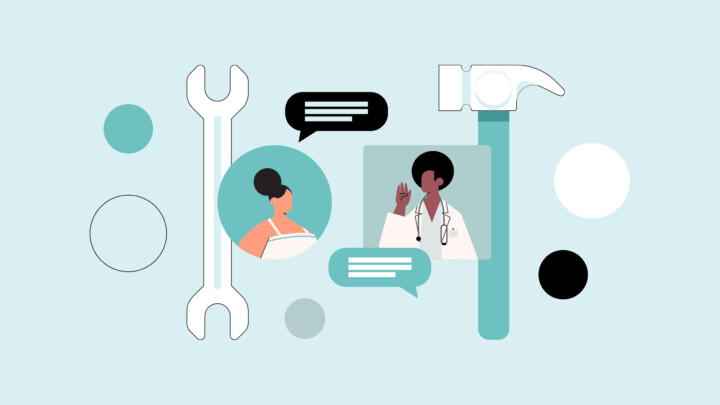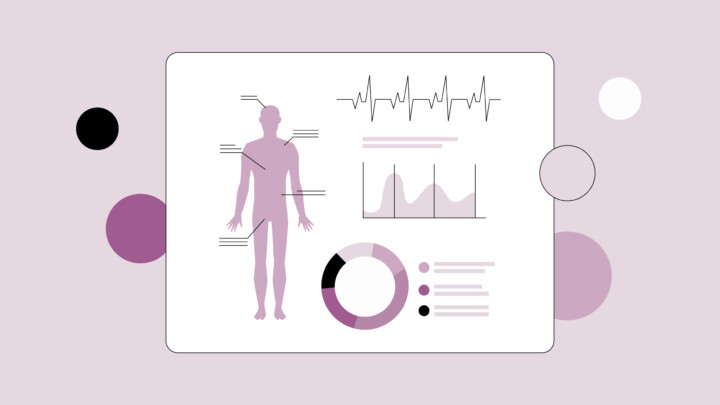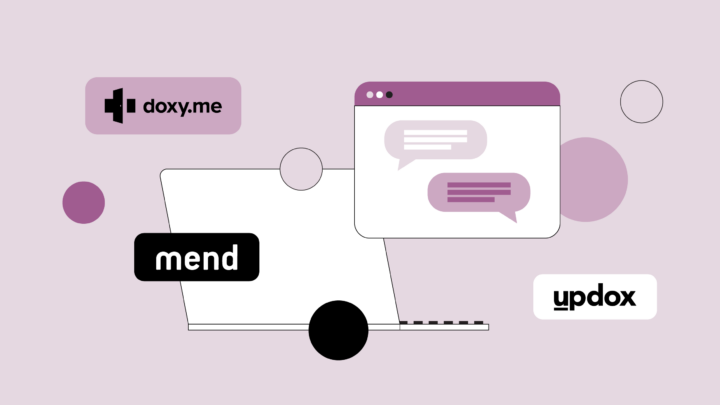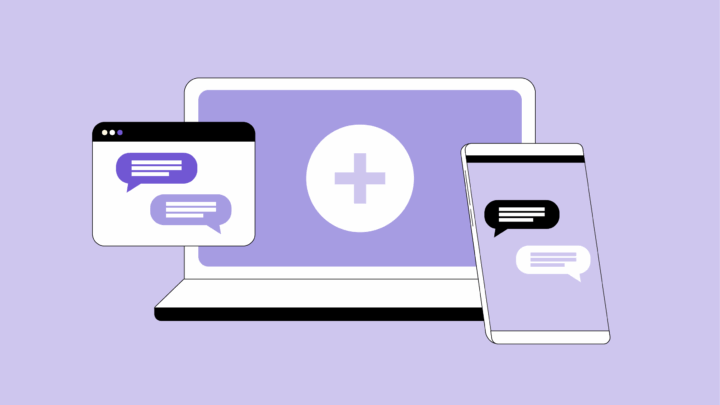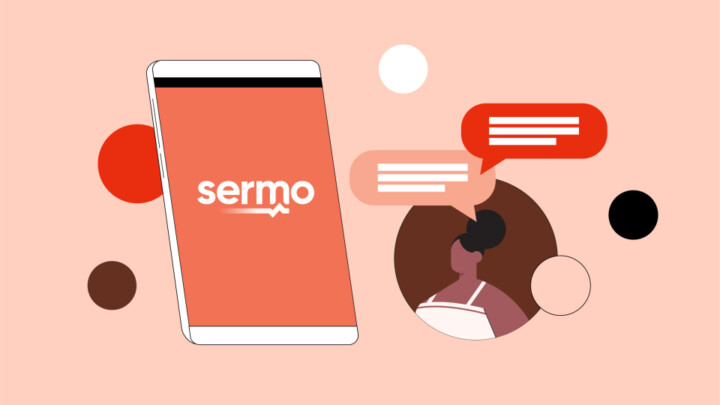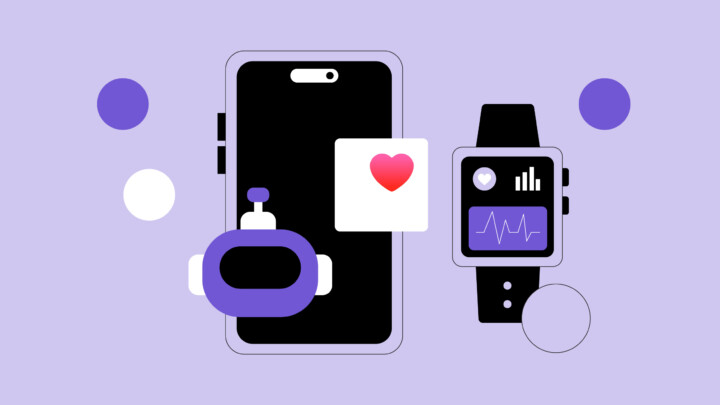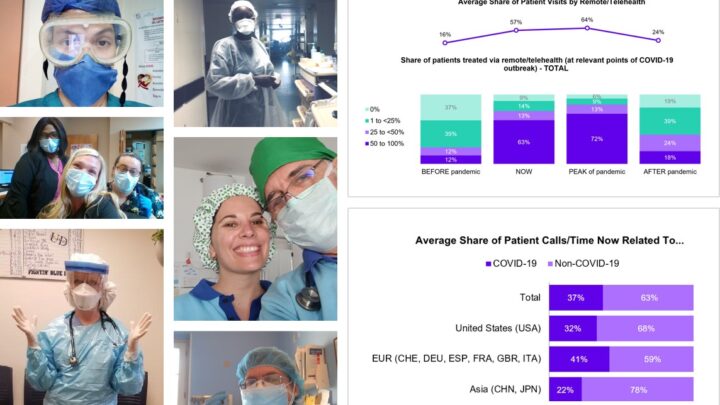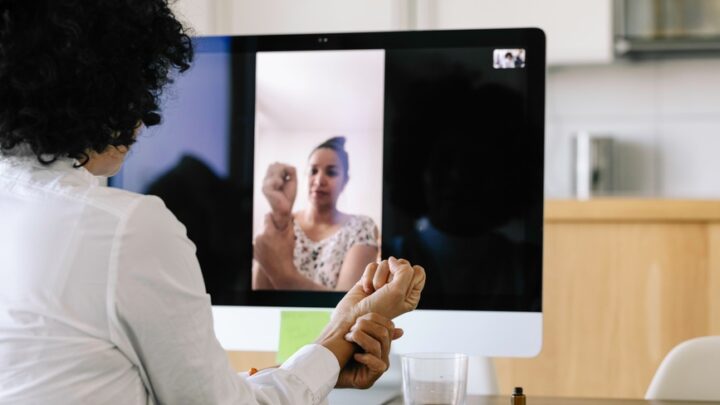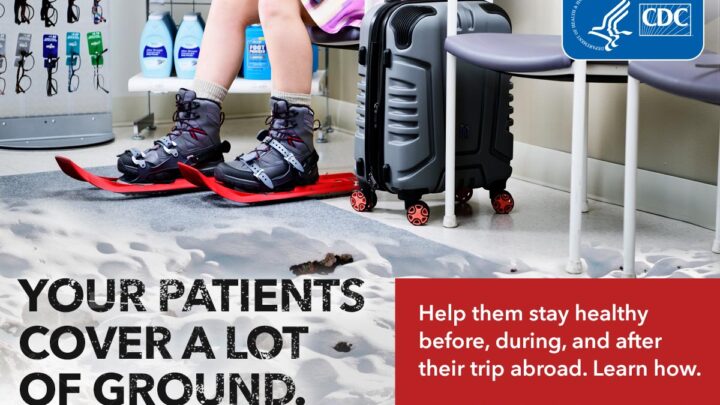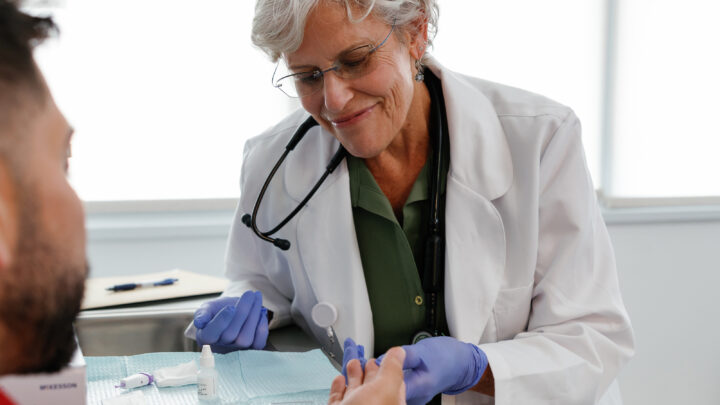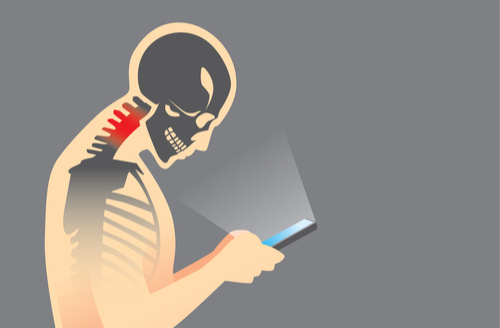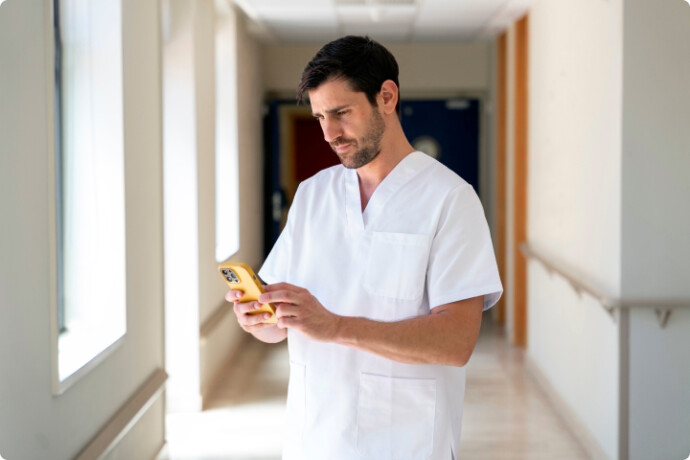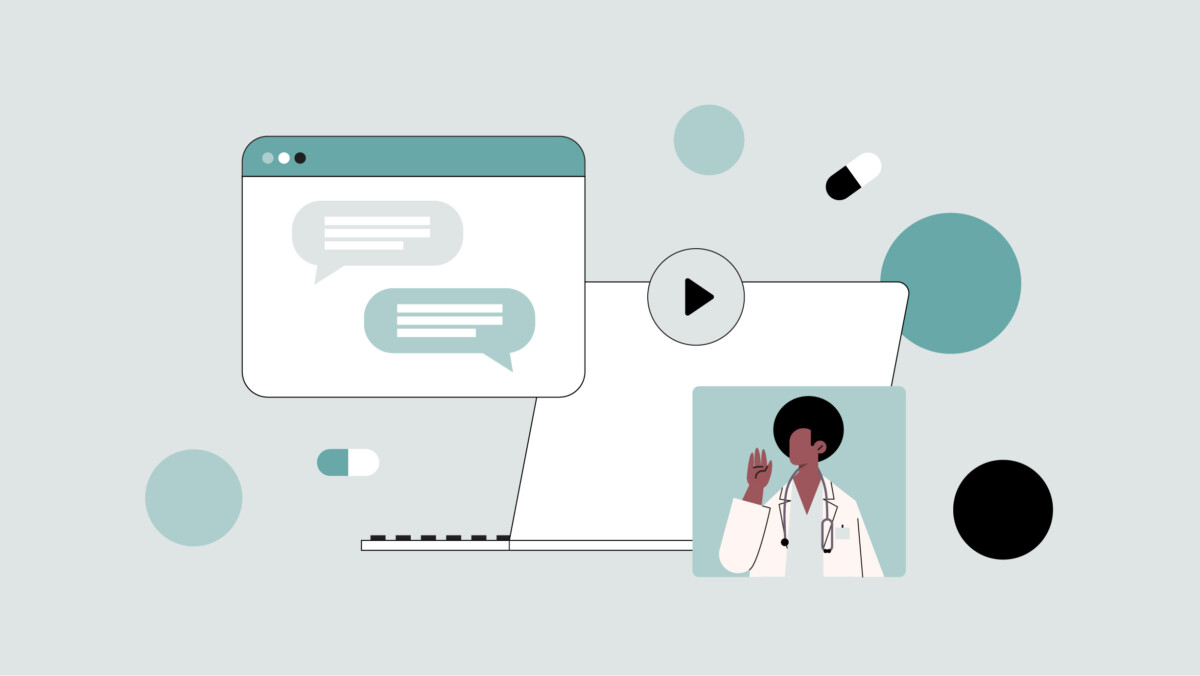
Technological breakthroughs are rapidly transforming modern medicine, revolutionizing how healthcare providers deliver care through telehealth and virtual visits. Inside the Sermo community, 75% of doctors are already using telemedicine in some form.
Telehealth usage skyrocketed by 766% in the initial three months of the COVID-19 pandemic, transforming it from a specialty tool to a critical care component, with clinicians rapidly embracing remote patient monitoring technologies, digital stethoscopes, and wearable devices. As a general practitioner explains on Sermo, “It is essential to be able to provide medical care through this tool, which undoubtedly had a before and after with the appearance of the COVID pandemic, and technological advancement.”
While often used interchangeably, telemedicine and telehealth have distinct differences. Telemedicine refers explicitly to remote clinical services delivered through virtual visits, such as diagnosis, treatment, prescription management, and follow-ups provided by a healthcare provider to a patient in a different location. Telehealth is broader, encompassing telemedicine, as well as non-clinical services such as provider training, administrative meetings, continuing medical education, and patient education conducted remotely.
Recent Sermo polls reveal significant adoption of telehealth among clinicians. When asked, “Do you include/offer telehealth as part of your practices?” the results showed that 47% offer it limitedly, 28% offer it frequently, and only 6% choose not to utilize it despite having a practice allowance. A resounding 87% of surveyed physicians agreed that telehealth usage will continue to rise over time.
While telemedicine cannot completely replace in-person consultations, it does play a crucial role in reducing administrative burdens, increasing access, and even cutting costs. Keep reading to discover the top telemedicine tools, challenges of implementation, and hear directly from doctors about their real-world experiences.
What makes a great telemedicine tool?
Exceptional telemedicine tools must incorporate certain features to ensure effective virtual visits and remote patient monitoring capabilities. When healthcare providers on Sermo identified the necessary resources for improved telehealth services, 38% prioritized better patient technology access to medical devices, 22% wanted improved provider technology access, 18% sought better EHR integration for remote patient monitoring, and 18% remained uncertain.
“Without a doubt, telemedicine is necessary. Benefits patients with chronic diseases who live in areas far from health centers or areas with difficult access,” says a GP in Venezuela. Similarly, a GP from Spain notes on Sermo, “It is a great improvement, but patients also have to be taught how to use it.”
Below are several key factors to look out for when choosing telemedicine tools:
HIPAA compliance and data security
Data security represents the cornerstone of any telehealth platform used by healthcare providers. Medical professionals must ensure that the chosen telemedicine tools maintain strict HIPAA compliance when conducting virtual visits, implement end-to-end encryption for remote monitoring data, utilize secure transmission protocols for digital stethoscopes and otoscopes, and employ robust patient access controls. These security measures protect sensitive patient information while maintaining regulatory compliance and help to build trust with your patients.
User-friendly interface for physicians and patients
Intuitive interfaces significantly increase the success of telehealth adoption among clinicians and patients. Both users need platforms that are easy to navigate during virtual visits, requiring minimal technical expertise for operating remote monitoring medical devices, and providing clear instructions for telehealth consultations. User-friendly design reduces technical barriers when using digital heart monitors, trackers, or mobile apps, which improves consultation quality during virtual visits and enhances overall patient satisfaction with telehealth services. Research consistently shows that the more intuitive and user-friendly a telemedicine system is, the higher the patient satisfaction levels, which can often translate into better engagement and improved health outcomes.
Integration with EHR/EMR systems
Seamless integration with existing Electronic Health Records streamlines workflow efficiency for healthcare providers conducting telehealth visits. This integration enables you to access patient histories during virtual visits, update records in real-time with remote monitoring data from wearables and apps, and maintain continuity of care across telehealth services, thereby reducing administrative burden while enhancing clinical decision-making.
Reliable video/audio quality
High-quality audio and video connections are fundamental for accurate diagnoses and effective patient communication during virtual visits. Reliable connections enable you to conduct thorough visual examinations, observe patient symptoms clearly through digital medical devices, use apps and notetaking tools effectively, and maintain professional consultation standards during telehealth services.
Appointment scheduling and billing features
Comprehensive telemedicine solutions include integrated scheduling systems and billing capabilities for telehealth visits. These features enable you to manage virtual visits efficiently, process payments seamlessly for remote monitoring services, and maintain organized patient records, all while supporting practice revenue streams from your telehealth services.
Mobile and desktop compatibility
Modern telemedicine tools benefit from cross-platform compatibility, supporting both mobile devices and desktop computers, allowing you to conduct secure patient calling from any device for telehealth consultations. Additional essential features include the ability to set office numbers as caller ID during virtual visits, different caller ID options for multiple practice locations, unlimited private domestic patient calls for remote monitoring, and notes sections for telehealth easy documentation.
Sermo Mobile offers these key functionalities, providing Sermo members with a comprehensive mobile telemedicine solution for conducting virtual visits and follow-ups. It allows you to call patients securely from any device while maintaining your privacy by setting a professional caller ID such as your office number. A user-friendly design and robust security protocols for telehealth services, makes it ideal for clinicians seeking reliable telemedicine tools for remote patient calling. Sign up for Sermo today to get free access to Sermo Mobile.
Secure AI and chatbot integration
Many telemedicine tools are now integrating AI automations and AI chatbots to enhance various aspects of virtual care, from automating administrative tasks to providing initial patient assessments. These AI-powered features can help you to streamline workflows, offer personalized patient support, and improve diagnostic accuracy. For instance, conversational AI chatbots can answer common patient questions, schedule appointments, and triage symptoms, freeing up your time to focus on more complex cases. One caveat with the increasing integration of AI is that it’s crucial to understand how telemedicine tools use your data, and ensure that the privacy of your patients is never compromised.

Best mobile dialers for telemedicine
Not all check-ups require physicians to sit down in front of their office desktop. For on-the-go or straightforward patient conversations, mobile dialers are vital. The best mobile dialers provide the same comprehensive telemedicine solutions as their desktop counterparts, facilitating flexible and secure communication between healthcare providers and patients during telehealth appointments.
Sermo mobile
Sermo’s new patient calling tool, Sermo Mobile, offers clinicians secure patient communication capabilities with professional caller ID features. As a free product for Sermo members, Sermo Mobile is designed to help balance clinic and personal boundaries and to fit seamlessly into any practice size with free international calling, protected contact details, and easy note-taking.
Here’s what physicians already implementing Sermo Mobile into their daily practice find most appealing about the new tool:
- 19% appreciate maintaining a professional presence during virtual visits
- 12% note higher patient response rates
- 19% prioritize enhanced privacy and security for telehealth consultations
- 20% value free access with Sermo membership
Physician testimonials highlight Sermo Mobile’s effectiveness: “Privacy for physicians, especially outside of working hours, is essential. By using tools such as the Sermo app, it is possible to balance more personalized patient care with the personal lives of healthcare professionals,” notes an Ophthalmology specialist.
A Pediatric specialist says, “SERMO Mobile is a safe and effective tool. Ensures that sometimes a quick phone call doesn’t become a full telehealth consultation!”
Doximity dialer
Doximity Dialer enables physicians to securely call and follow up with their existing patients from any device. Its professional caller ID and encrypted connection help maintain privacy while improving communication and continuity of care during virtual visits.
Spruce health
Spruce Health offers a unified communication platform for messaging, calling, and video visits. It helps practices manage patient inquiries, follow-ups, and chronic care remotely, keeping conversations organized and HIPAA-compliant.
RingCentral for healthcare
RingCentral for Healthcare streamlines internal and patient communication with HIPAA-compliant voice, video, and messaging. It allows care teams to coordinate securely and maintain timely communication with patients outside the clinic.
These technological advances demonstrate how telehealth technology is transforming virtual healthcare across the industry and help physicians enhance care continuity, communication, and accessibility for their existing patients.
What other tools are available for telehealth?
Numerous telemedicine and telehealth platforms are available, each offering distinct advantages to healthcare professionals for delivering excellent continuity of care through telehealth.
Doxy.me
Doxy.me offers a simple, browser-based telehealth platform for conducting follow-ups and check-ins with patients. It requires no downloads, making it easy for both clinicians and patients to use while ensuring secure, compliant video visits.
Amwell
Amwell’s enterprise telehealth system supports large healthcare organizations in delivering follow-up care and remote monitoring. Its scheduling, documentation, and billing tools simplify workflow across specialties.
Teladoc Health
Teladoc Health provides an integrated telehealth infrastructure for hospitals and health systems to deliver coordinated virtual care to existing patients. It supports multi-specialty follow-ups, chronic care management, and secure data sharing across providers.
MDLIVE
MDLIVE offers virtual visit tools that health systems can use to extend behavioral health and urgent care services to established patients. Its integrated workflow features help ensure timely access and consistent documentation.
Zoom for healthcare
Zoom for Healthcare adapts the popular video conferencing platform for medical use, providing a secure, HIPAA-compliant video platform for routine check-ins, consultations, and multidisciplinary case discussions. Its ease of use and reliable quality make it a practical option for maintaining strong patient connections remotely.
What doctors are saying about telemedicine
Regarding satisfaction with telehealth incorporation, 42% of surveyed physicians on Sermo reported it working smoothly, 26% felt ‘improvement is needed’, and 22% lacked adequate resources. Doctors’ perspectives on telehealth services reveal both enthusiasm and measured caution regarding mobile app-enabled virtual visits and remote patient monitoring initiatives. When asked if telehealth positively impacts health maintenance and clinical outcomes, 38% of physicians responded “Yes, definitely,” while 56% answered “Yes, sometimes,” and only 6% said “No, never.”
Current implementation of mobile telehealth services varied significantly: 53% had never utilized such initiatives, 25% had already implemented mobile app telehealth systems, and 22% were in planning stages for mobile telehealth. Physicians share a range of mixed feelings about the scope of telehealth services.
“I think it may be a useful tool for younger patients who are more Internet and computer savvy. It may be difficult to implement with people who are not computer literate,” writes a Proctology physician, showcasing a potential challenge in adoption rate based on patient age.
Inside the Sermo community, many physicians are optimistic about its potential. “Telehealth has several advantages, including cost savings, convenience, and the ability to provide care to people with mobility limitations, or those in rural areas who don’t have access to a local doctor or clinic,” explains a specialist in Family medicine.“Telemedicine came during the pandemic to stay. In my workplace, not only sophisticated devices of remote monitoring are common, but the use of the [classic] telephone to replace medical acts that until recently no one considered in a non-face-to-face manner,” notes an urgent care doctor in Spain.
However, there are some doubts comparing telemedicine’s effectiveness against in-person visits. “In my opinion, a screen will never be the same; nothing can replace a good interrogation and a good physical examination in person. We can use this technology to help or give an opinion to a colleague with a case, but it should not become a common practice in medicine,” says an Ophthalmologist. Similarly, a GP shares on Sermo, “I believe that nothing can replace a good doctor-patient relationship and physical examination; there are many situations around a patient that cannot be perceived online.”
The bottom line about telemedicine tools
Telemedicine tools continue to evolve rapidly, offering healthcare providers numerous options for delivering telehealth services through virtual visits and remote patient monitoring. From comprehensive platforms like Amwell and Teladoc Health to convenient mobile dialers like Sermo Mobile, clinicians can select tools that match their practice needs for effective telehealth consultations.
Key features distinguishing excellent telemedicine tools include HIPAA compliance for virtual visits, user-friendly interfaces, EHR integration supporting remote monitoring data, reliable audio/video quality for telehealth services, scheduling capabilities for virtual visits, and cross-platform compatibility.
9 out of 10 physicians agree telehealth implementation will continue to grow, supported by ongoing advances in medical technology that enhance virtual care capabilities. Selecting the right medical devices and platforms has now become crucial for practice success. The combination of comprehensive telehealth platforms with specialized mobile dialers creates robust virtual care capabilities that complement traditional in-person services.
As patient adoption grows, many people still face certain hurdles that prevent them from using these services, which can be addressed by enhancing digital literacy, improving regulatory and legal frameworks, and ensuring language and cultural inclusivity.
Join the Sermo community today to collaborate with fellow physicians, stay informed about the latest advancements in telemedicine, and share insights on implementing new medical technologies. Gain access to the powerful Sermo Mobile tool to call patients directly from the app while maintaining a professional caller ID and ensuring patient privacy. Take advantage of this innovative tool to enhance patient outcomes, streamline telehealth service delivery, and reduce administrative burdens today.
Key takeaways
- Doctors should look for tools that are HIPAA-compliant, easy to use, compatible with mobile and desktop devices, and capable of integrating with EHR/EMR systems.
- Whether you’re a solo practitioner or part of an extensive hospital network, scalability and reliability in video/audio quality are essential.
- While many physicians appreciate telemedicine’s convenience and value for rural or chronic patients, others warn it can’t replace the doctor-patient relationship.
- With built-in privacy and direct patient calling from the app, the Sermo Mobile Dialer is a secure and convenient tool for modern clinical workflows.
